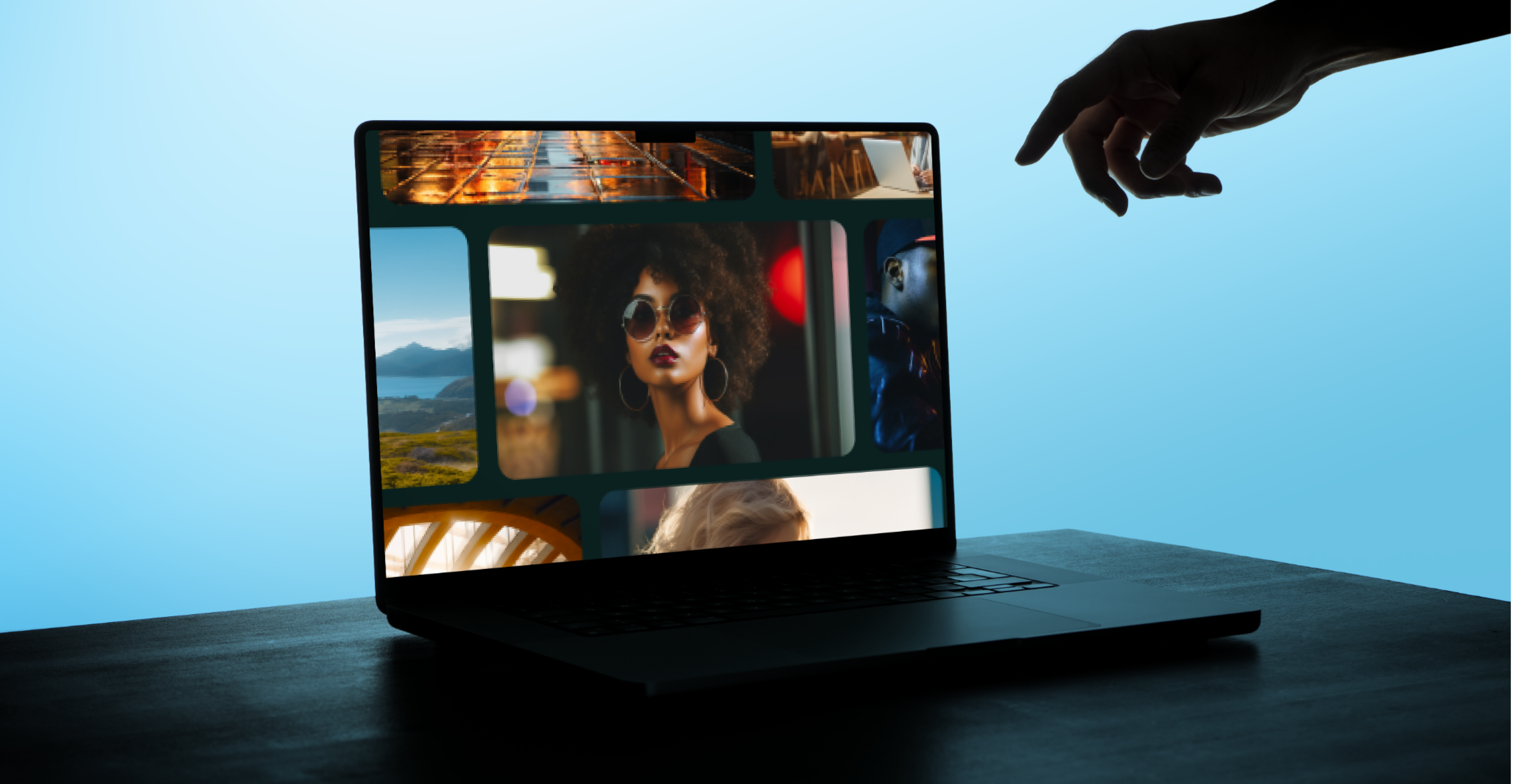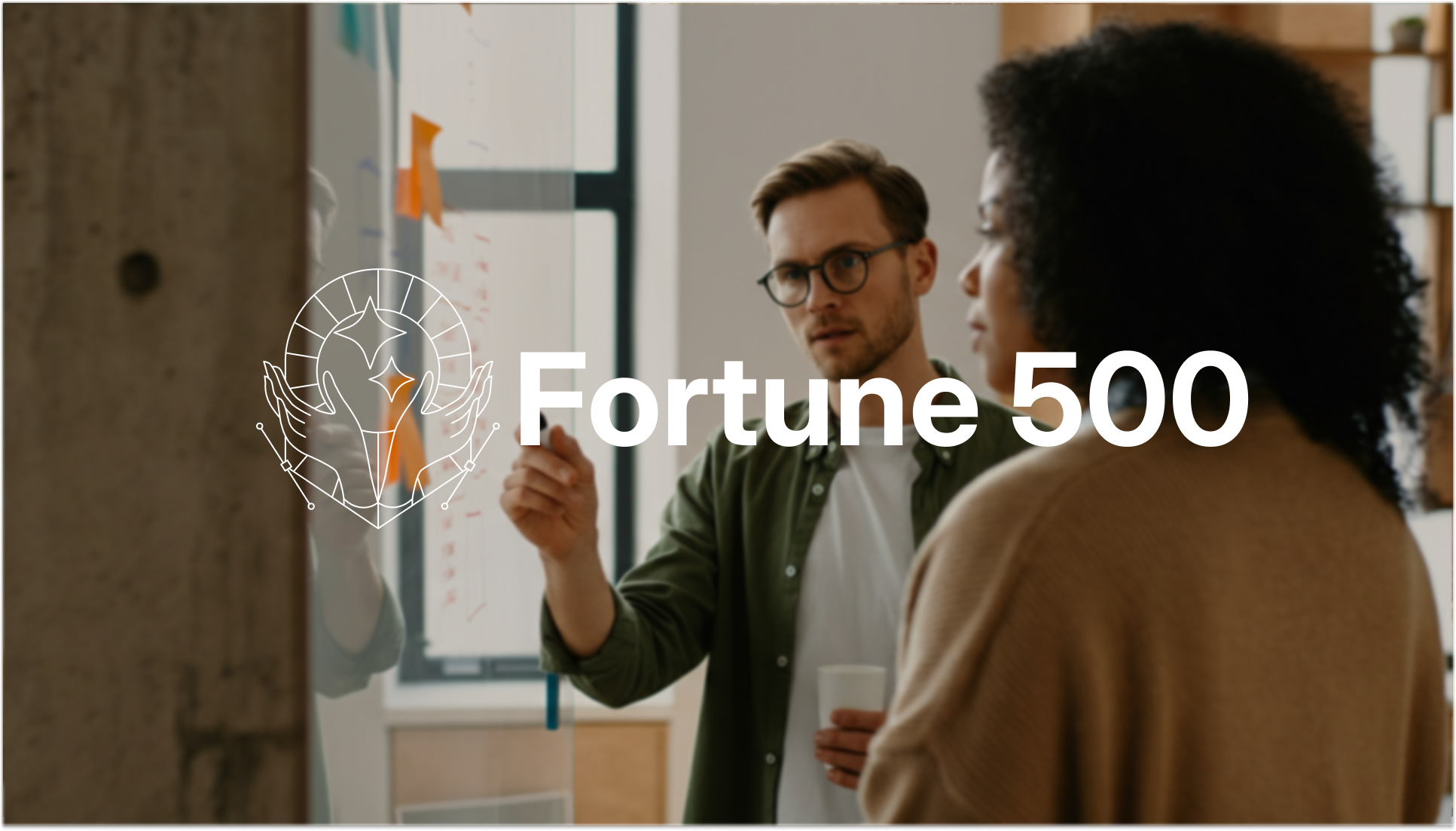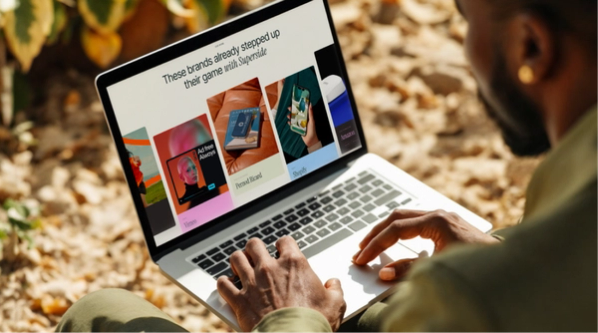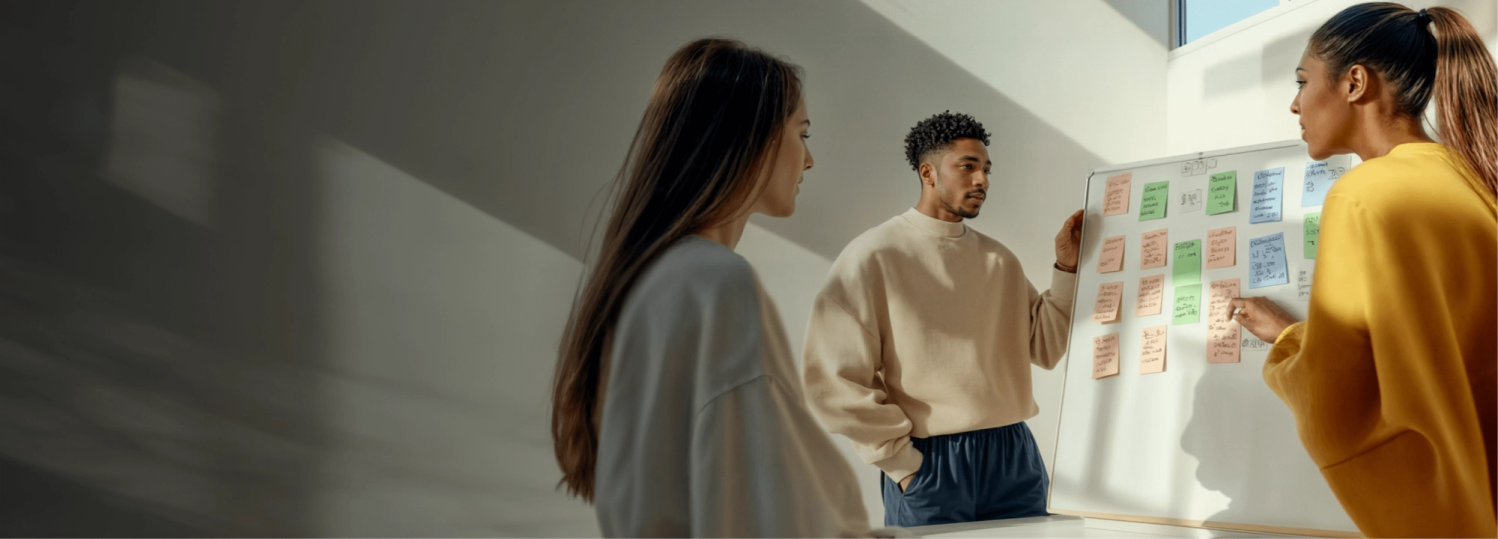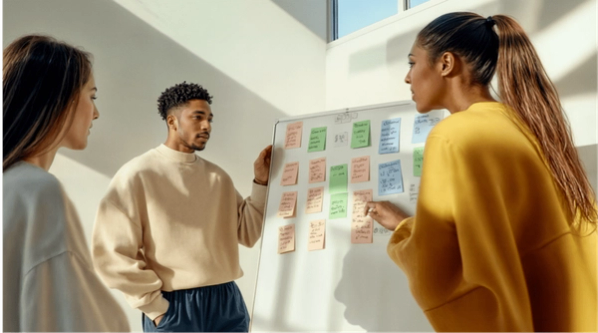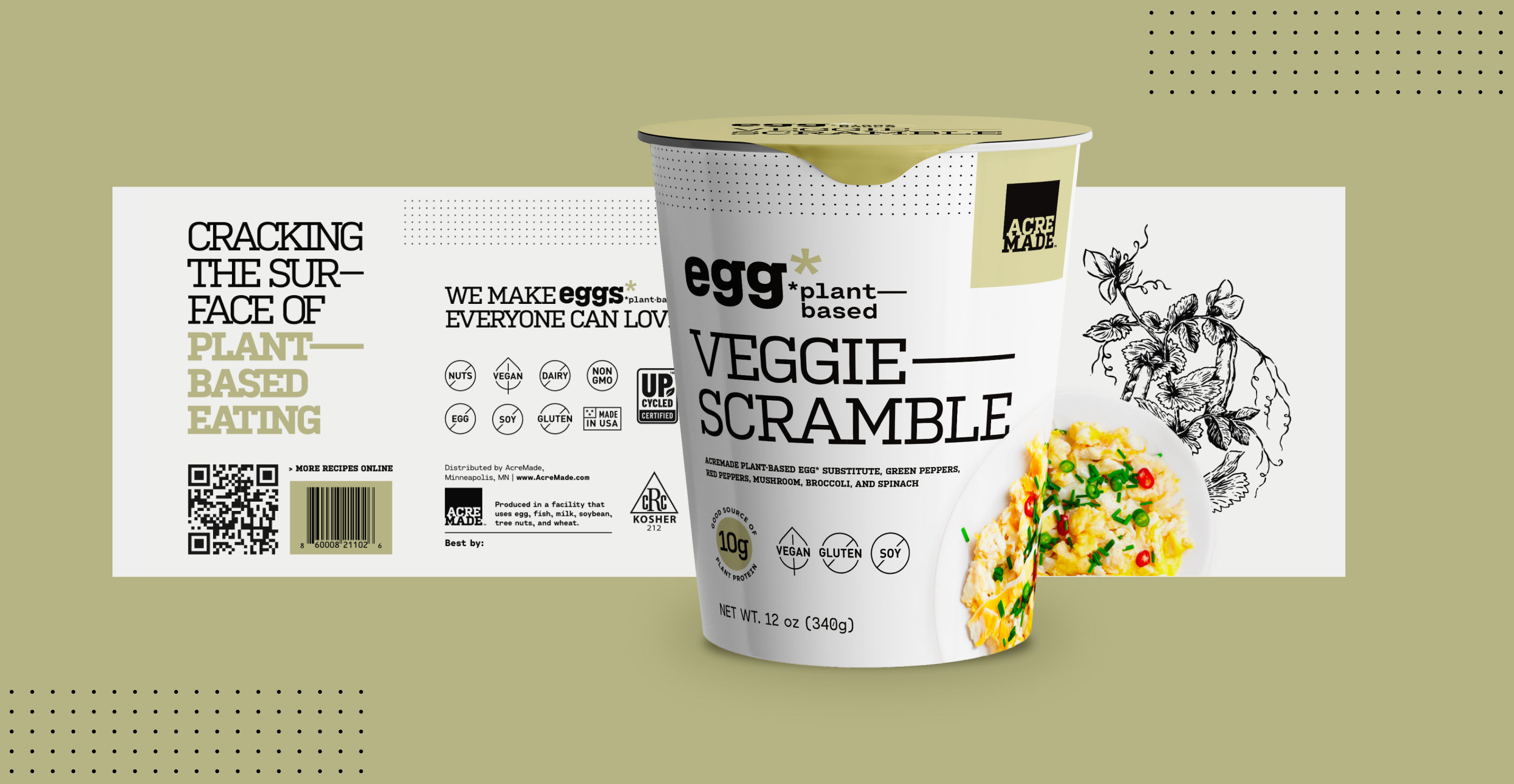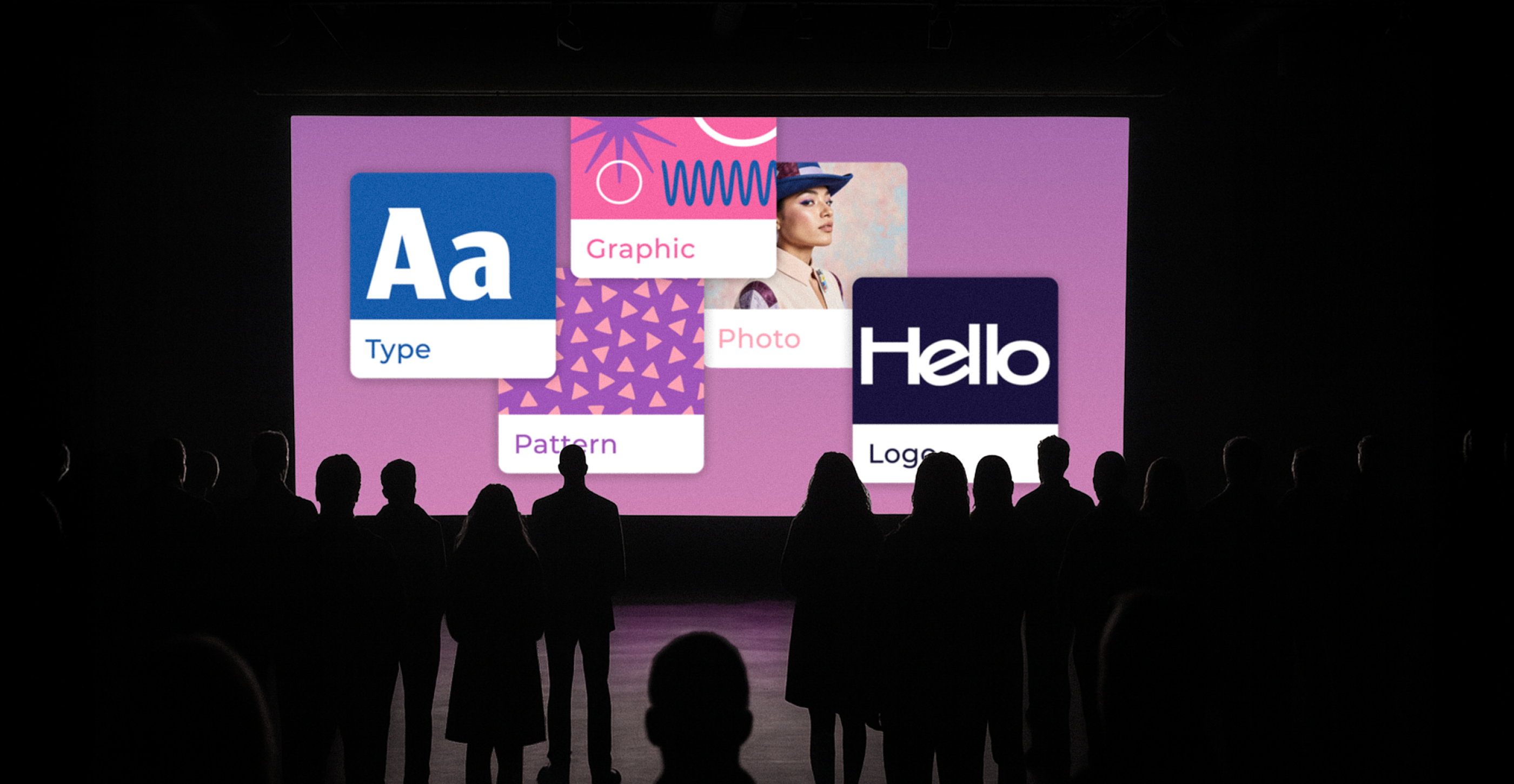
A good design system can scale your brand faster, unify your creative teams and dramatically cut production time. In this post, we explore nine standout design system examples from Superside customers such as TransACT and Vimeo, as well as other industry leaders like IBM and Shopify, to show you what great looks like (and how to get there).
Design chaos drains time, dilutes brand equity and frustrates everyone, from project managers and performance marketers to designers. Yet, too many enterprise teams drown in inconsistent creative processes, siloed workflows and scattered design files.
Design systems are the antidote. At their core, they’re centralized collections of brand-approved assets, reusable UI components, design patterns, documentation and rules that guide how your company looks and feels across every channel and product.
These systems provide creatives with the tools they need to create consistent, high-impact digital experiences that shape how your company appears and feels across every channel and product. They also make workflows more efficient and manageable. Figma found, for example, that designers who use design systems complete tasks 34% faster than those who don’t use them.
Whether you manage a web of related brands or just don’t want to hunt for the “correct” logo version anymore, you’re in the right place. This article explores nine design system examples, some of which were built in partnership with Superside, to help you create your own.
Why design systems matter more than ever
Design systems aren’t just about reusable components and shared files. They’re strategic assets that unify your brand across teams, platforms and markets.
For enterprise brands, the stakes are high:
- Your teams are everywhere, but your brand shouldn’t be: 70% of large companies now run distributed or hybrid design teams. Without a shared design system, alignment is a full-time job.
- External partners = creative interpretation gone wild: 85% of marketers say vendors misapply brand identity due to a lack of centralized systems and documentation.
- Your product team ships weekly; your brand updates quarterly: 74% of product managers say inconsistent design slows feature development.
- Marketing teams run a content marathon without a map: Superside customers produce up to 10,000 assets per quarter, 40% of which are often duplicated or off-brand when a design system isn’t present.
Without your own design system in place, you end up with chaos: Off-brand visuals, inconsistent UX, wasted time and a frustrated creative team. For large organizations, they also help enforce governance standards, ensuring consistency, security, and data compliance across distributed teams.
Conversely, designers with a design system complete tasks 34% faster (equivalent to 3.5 full-time designers per week). And efficiency gains are just the start: Enterprises with design systems typically earn a 135% ROI across design and engineering costs.
What makes a design system successful (and scalable)
Superside has partnered with dozens of fast-scaling brands. The happy result: We know what separates design systems that thrive from those that flop.
Here’s what the best design systems, and especially effective web design systems, have in common:
1. Start small, expand smart
The strongest design systems don’t launch as bloated monoliths; they start lean.
Nail the basics first: Create consistent core components, design tokens, typography, brand colors, pattern libraries and a few reusable templates. Then launch, stress test, gather feedback and grow from there. It’s an MVP mindset, not a waterfall one.
2. Think atomic, not chaotic
Good design systems rely on atomic design, an approach popularized by frameworks like Material Design, Apple’s Human Interface Guidelines, and Salesforce’s Lightning Design System. That means style guides and UI kits with usage guidelines for design tokens and elements like buttons, fields and labels that combine into flexible, reusable components.
These atomic components combine into design patterns: Repeatable, scalable solutions to common UX challenges. Think modals, onboarding flows or pagination. Design patterns give product managers, content designers and developers a shared language to build digital products faster.
3. No docs, no deal
If it’s not documented, it doesn’t exist. Whether you use Zeroheight, Loom, Notion or a custom portal, your design system rules need to be clear, visual and searchable.
Use code and visual examples wherever possible to bridge the gap between design and implementation. Design and development teams shouldn’t have to guess what’s “on brand.”
Design systems aren’t just repositories; they’re living products that need maintenance, buy-in and consistent communication to thrive. You can’t just launch your design system and hope for the best.

4. Adoption is everything
A design system no one uses is just shelfware. Once you’ve defined the core rules and standards, train your team. Host onboarding sessions. Record how-tos. Create cheat sheets. Make the design system usable and useful for everyone (especially designers and product managers), and you’ll see the return.
5. Design tokens: Small rules, big payoff
Design tokens are the basic building blocks of a design system. These small, system-wide variables define values for UI elements like color, space, typography and elevation, and can be reused everywhere.
Tokens make design system updates easier, theming simpler and consistency automatic. They provide a strong foundation for scalable design efforts across platforms.
Design tokens also enable designers to create scalable, themeable interfaces that cater to both brand and user needs. They allow designers and developers to ensure consistency across platforms and, at the same time, deliver highly customizable user experiences.
6. Someone’s got to own it
Every design system needs an owner. Someone to update, enforce and keep it alive. Without governance, entropy wins. Clear roles and streamlined workflows help maintain high quality and minimize chaos.
9 design system examples to inspire your next build
Ready to see some of the best design system examples around? Keep in mind that if you don’t know how to get amazing creative, you can just Superside it!
1. Design systems that scale: Superside’s 70x impact on TransACT’s brand consistency and digital experience
Customer: TransACT
Industry: EdTech / SaaS
Challenge: With 13 sub-brands that evolved independently, TransACT’s internal teams spent more time correcting errors than developing new creative. The two-person brand team supported 70 marketers across the group with no shared design guidelines or governance.
Solution: Superside built a scalable design system with unified typography, color, layout and governance. A new brand architecture connected the dots, while a comprehensive toolkit replaced chaos with clarity.
Why it works:
- The design system unified 13 fragmented sub-brands.
- It freed up internal bandwidth.
- It helped the brand to scale without an increased headcount.
Key outcomes:
- 70x increase in scalable output.
- One centralized design system across brands.
- 100% stakeholder satisfaction.
Having a unified and easily executed design system escalated our look and feel by the power of 70. Every internal stakeholder at TransACT can now use these design guidelines as a source of truth, and our team can focus on driving new leads and revenue.

2. Vimeo’s design system by Superside: Lights, library, action
Customer: Vimeo
Industry: Media/SaaS
Challenge: Vimeo’s growing portfolio led to creative fragmentation across teams. Inconsistent visuals, design debt and a lack of shared standards slowed production and muddied the brand.
Solution: Superside created a centralized system of design tokens with reusable components for over 15 customer journeys, which resulted in significantly improved experiences.
The system and design guidelines also streamlined visual consistency across teams and channels, improved handoffs and accelerated production.
Why it works:
- Tokenized color and layout rules facilitate easy collaboration.
- Unified visuals make for strong brand recall among target customers.
- The system is designed for experimentation and reuse.
Key outcomes:
- Reusable design components across 15 customer journeys.
- Reduced duplication.
- Faster delivery for both marketing and product design.
We helped Vimeo’s team build a set of components that suited over 15 different communication tracks, like onboarding, win-back and account actions. These components needed to address a wide range of design needs, but overall, it was a very smooth ride.

3. Booking.com’s design system: Scaled-up creativity rooted in brand values
(Source: Figma)
Company: Booking.com
Industry: Travel / SaaS
The challenge: With 200+ designers and 800 developers across 150+ product teams, Booking.com’s creative output ballooned. However, a lack of centralized design principles resulted in brand dilution, an inconsistent voice and visual sprawl.
Solution: Booking.com scaled its minimal design tokens (logo, signature blue color, clean typography) into a structured, global design system.
Design guidelines, web UI kits, shared briefs and platform consistency brought discipline without killing creativity.
Why it works:
- Guided design principles promote autonomy and empower teams to make independent design decisions.
- Structured briefs facilitate faster and more aligned execution.
- Systems thinking is embedded across teams.
Key outcomes:
- Consistent UX across markets.
- Reduced creative rework.
- Empowered local teams can now innovate within guardrails.
Superside webinar: Discover how Booking.com scales creative production across teams while it stays 100% on-brand.
We wanted people to play and create, not feel like they were painting by numbers. When you give people frameworks and not fixed templates, they bring their own energy while staying on-brand.

Get key insights from Booking.com’s creative team here
4. IBM Carbon design system: Open-source design at enterprise scale
(Source: Carbondesignsystem.com)
Company design system: IBM’s Carbon Design System
Industry: Technology/Enterprise TechThe challenge: IBM needed brand cohesion across hundreds of digital experiences and teams worldwide. Consistency without centralization was nearly impossible.
The solution: The multinational created its Carbon design system, an open-source platform for UI components, design tokens and code built on the IBM Design Language.
The Carbon design system serves product teams, marketers and developers across IBM’s massive ecosystem. Modular and accessible, it serves as a blueprint for multi-product governance.
Why it works:
- The open-source nature of the design system allows anyone inside or outside IBM to contribute, iterate and scale.
- The design system empowers both designers and developers with comprehensive UI kits, reusable components, design token-based theming and style guidance.
- Strong documentation and governance ensure consistent application across thousands of contributors.
Key outcomes:
- Greater velocity across teams.
- Stronger design-dev collaboration.
- Standardized UX across IBM’s product ecosystem.
The website mentions: “In nature, the element carbon builds complex structures from simpler compounds. This motif mimics how our individual styles and components can combine to make beautifully complex, natural and intuitive designs.”
5. Shopify Polaris design system: Reusable components, style guides and scalable UX for merchants
(Source: Polaris-react.shopify.com)
Company design system: Shopify Polaris
Industry: eCommerce / SaaS
The challenge: When Shopify’s team grew fast, it became harder and harder to maintain brand consistency across touchpoints. Without human interface guidelines, UX fragmentation hurt the merchant experience and brand perception.
Solution: Polaris, Shopify’s design system, offers clear design, content and development guidance. With reusable React components, built-in accessibility and comprehensive documentation, it empowers teams to create consistent experiences across platforms.
Why it works:
- The system’s shared toolkit and design tokens drive visual and functional unity.
- Merchant-first principles guide every design decision.
- Detailed guidance and documentation empower autonomous creation.
Key outcomes:
- Consistent UX across Shopify’s admin, storefronts, apps and web.
- Accelerated onboarding for new teams.
- Improved accessibility and cohesion.
Shopify says: “Polaris is the foundation for how we design and build experiences at Shopify. It’s our shared language and toolkit.”
6. Audi UI design system: Engineering elegance with brand precision
(Source: Styleguide.audi.com)
Company design system: Audi.com UI guide
Industry: Automotive
The challenge: Audi needed to streamline its digital experience across devices, markets and applications, while it kept its premium design aesthetic intact.
Solution: The Audi UI design system blends German discipline with visual narratives. Figma UI kits, adaptive layout grids, motion design guidance and code modules streamline work across teams, devices and platforms.
Why it works:
- The design system blends technical precision with visual storytelling.
- It’s designed for cross-platform adaptation, from web to in-car screens.
- Integrated motion and typography guidance ensure consistent brand expression.
Key outcomes:
- Stronger design alignment globally.
- More efficient production with reusable app and web components and elements.
- A seamless bridge between digital and physical brand experiences.
Audi says: “Our design system reflects Audi’s progressive premium ethos: Visually consistent, technically precise and human-centered.”
7. Microsoft Fluent UI design system: Universal design for every use
(Source: Microsoft)
Company design system: Microsoft Fluent UI
Industry: Enterprise/Cross-platform software
The challenge: Microsoft’s ecosystem spans Windows, Office, Outlook, Teams and more. As each product evolved independently, the company was stuck with fragmented user experiences.
The brand required a unified design language with reusable components to streamline the design and development process and enhance UX across all platforms.
Solution: Microsoft launched its own design system, Fluent UI, and fully embraced a design-to-code approach. Their public system now delivers design tokens, React and TypeScript components, Figma UI kits and comprehensive documentation.
A core team of over 200 professionals oversees alignment and execution, and ensures that design and engineering work in unison.
Fluent 2 is the next evolution of Microsoft’s design system, focused on the development of seamless cross-platform experiences and modern aesthetics.
Why it works:
- The system’s framework-agnostic components support React and Angular.
- It gives every team (designers and developers alike) a single source of truth.
- The company’s open-source ethos encourages transparency, collaboration and adoption.
Key outcomes:
- Consistent look-and-feel across major Microsoft products.
- Fewer design do-overs thanks to pre-built, reusable components and elements.
- Faster product rollouts that stay aligned with Microsoft’s brand.
Microsoft says: “Fluent’s superpower is its ability to adapt to different platforms and environments. That means that we tailor our updates to each platform we support. You’ll be able to build a fluid and natural experience for your customers every time. Wherever they are, whatever they’re working on.”
8. Atlassian design system: Guided by code and clarity
(Source: Atlassian.Design)
Company design system: Atlassian
Industry: Collaboration/SaaS
The challenge: Atlassian’s suite, which includes Jira, Confluence and Trello, powers millions of interactions daily. When the team noticed inconsistencies in design across products and internal tools, they recognized the need for a framework that could accelerate design decisions and help designers to maintain autonomy.
Solution: The Atlassian design system was launched with a comprehensive suite of tools, which includes design tokens, React and TypeScript component libraries, Figma UI kits and in-depth usage guidelines for all design elements. Today, a dedicated team of 70 maintains and evolves the system.
Thanks to deep integration between design and engineering, contributions remain transparent, visible and scalable.
Why it works:
- The Atlassian design system features modular elements and is extendable across frameworks.
- Syncs design and code through Figma and React exports.
- Open contributions create shared ownership.
Key outcomes:
- Streamlined handoff between designers and developers.
- Consistent UI across Atlassian’s products.
- Faster onboarding and fewer duplicate design efforts.
We’re building a network of Champions: Design system experts outside of our team. So, when we have a new concept, we just teach them, and they can teach three or four others and so on.

Watch: Q&A with Atlassian’s Lead Design Systems Designer:
9. Twilio Paste: A design system built for builders
(Source: Paste.twilio.design)
Company design system: Twilio Paste
Industry: Communications/Developer tools
The challenge: When Twilio’s product suite expanded fast, they needed UI consistency across complex tools used by both developers and enterprise customers. But a lack of speed, accessibility and brand cohesion slowed down the design process.
The solution: Twilio created Paste, a public, open-source design system that combines design tokens and guidance, React components, themes, accessibility standards and content rules in one flexible system. It empowers development teams and designers alike.
Why it works:
- The system has a developer-first focus with well-documented elements and reusable components.
- Performance and accessibility are built in.
- Public transparency encourages adoption and community trust.
Key outcomes:
- Faster implementation, thanks to UI kits.
- Reduced design and technical debt.
- Stronger customer experience and brand reliability
Twilio says: “Paste is how we build the Twilio customer experience – one accessible, consistent and performant component at a time.”
Make Superside your design system partner
If you’ve had it with fragmented design systems, guidelines and elements, Superside can help you build a scalable design system.
Our designers can help you unify your UI elements, design tokens, documentation and branding into a single source of truth. Whether you work with a central brand team or 150 product squads, we’ve done it before.
Why choose Superside? You’re guaranteed:
- World-class system designers with deep platform knowledge (think Figma, Adobe, Zeroheight and more).
- Flexible costs for enterprises and scaleups.
- Deep experience in branding, product design, marketing creative and UI/UX.
But don’t just take our word for it. Take a look at our results: According to the Forrester TEI report, Superside slashed turnaround times, internal rework and production costs to deliver a 454% ROI for our partners.
Design systems are just the start. If you can imagine it, we can design it. As the world’s top AI-powered creative service, we combine a global team of top-tier creatives, advanced AI tools and workflows, and a robust project management platform to deliver high-quality work faster and more cost-effectively than traditional agencies.
Are you ready to give a new edge to all your creative assets? Just Superside it.
Invest once, scale infinitely
A good design system isn’t just a set of components or elements. It’s a creative multiplier.
It saves time, reduces rework, empowers teams and unifies your brand across every market and platform. From TransACT’s 70x output to Vimeo’s ability to unify over 15 customer journeys with a single, flexible component library, the ROI is clear.
Let Superside help you turn design chaos into clarity.




